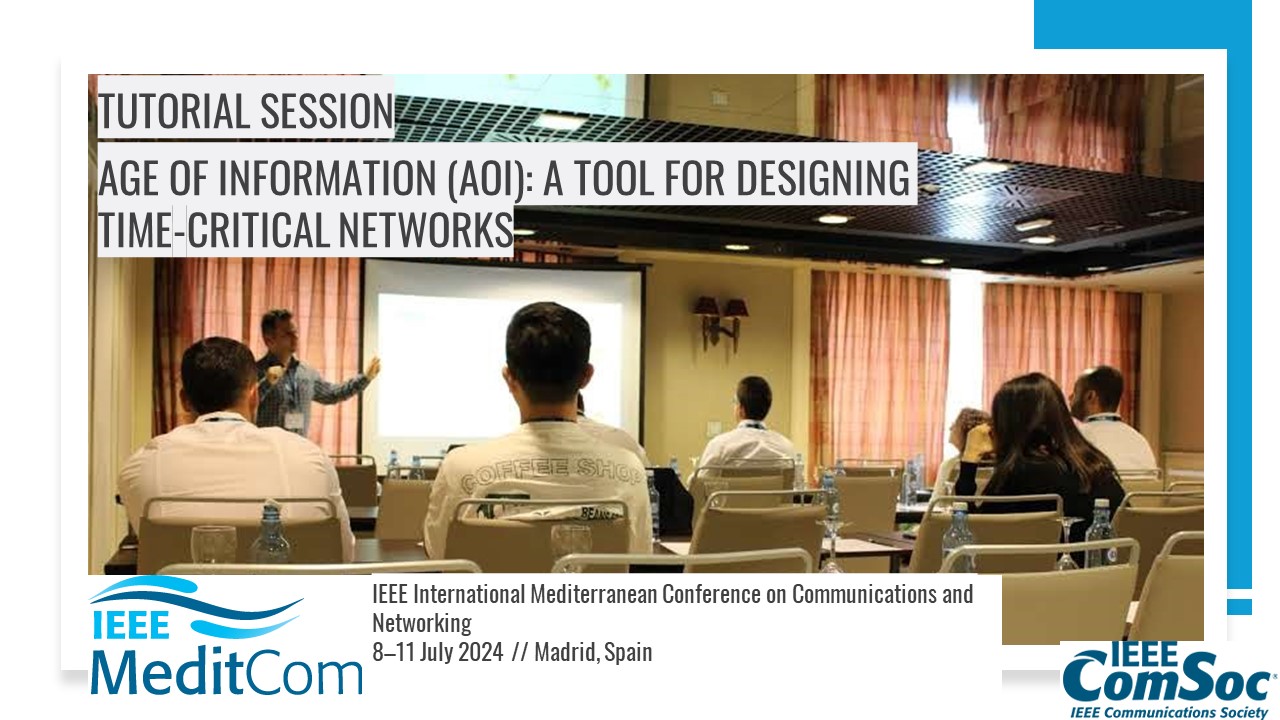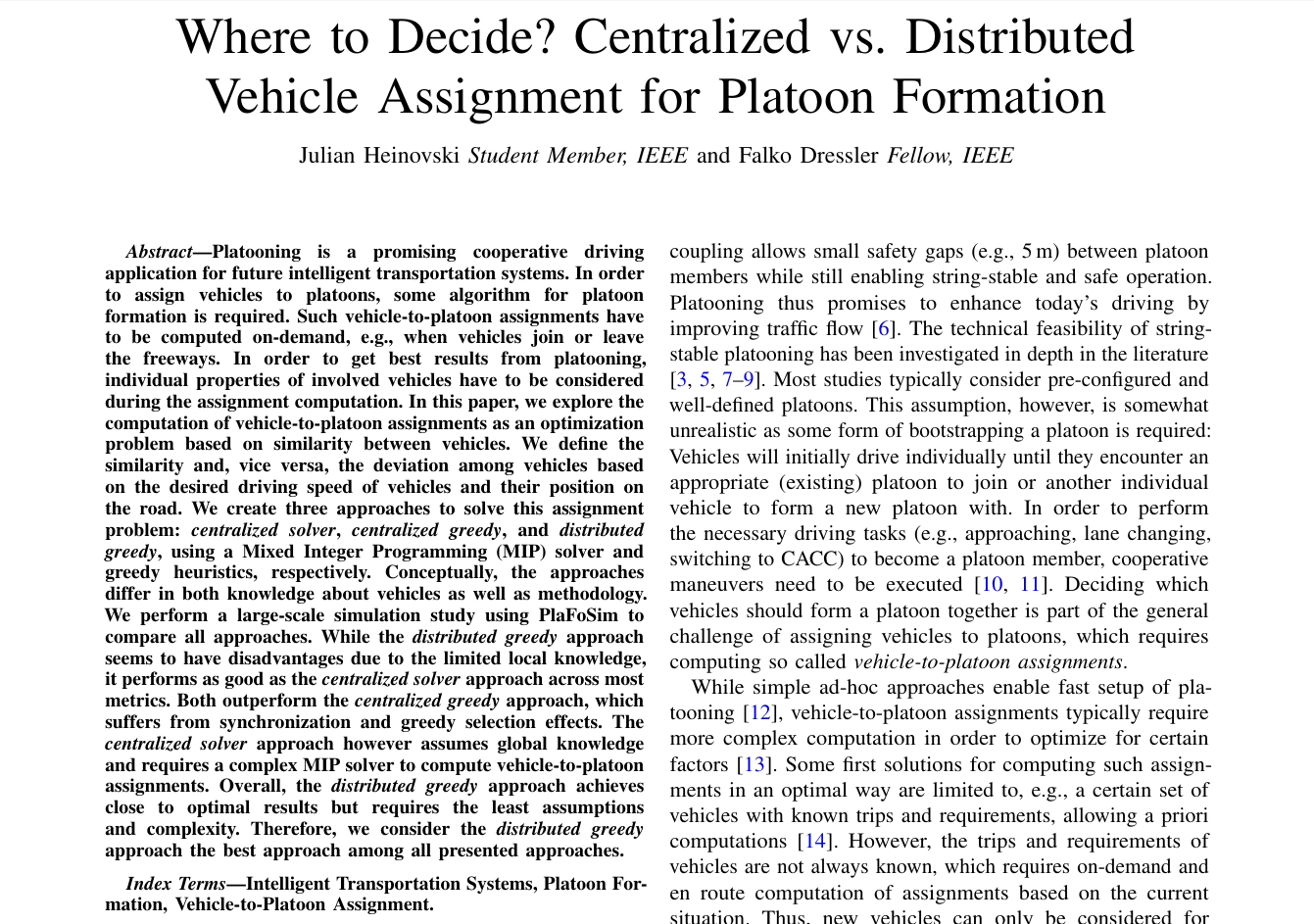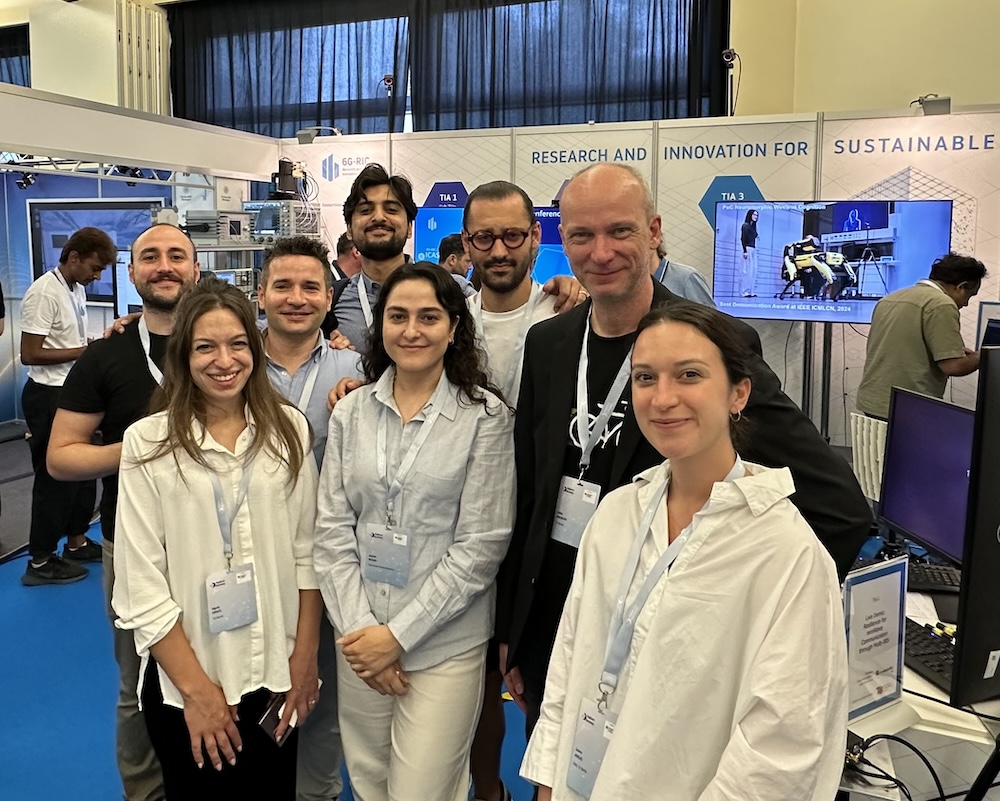Literature Database Entry
sommer2011cartocar
Christoph Sommer, "Car-to-X Communication in Heterogeneous Environments," PhD Thesis, Department of Computer Science, Friedrich–Alexander University of Erlangen–Nuremberg (FAU), June 2011. (Advisor: Falko Dressler; Referees: Falko Dressler and Ozan K. Tonguz)
Abstract
The challenge of designing and evaluating an integral wireless communication system that affords the exchange of data between cars and with infrastructure is commonly answered only in part. Car-to-X communication systems are generally treated as operating either only in freeway scenarios or only in urban scenarios, operating either in a completely infrastructure-less or an infrastructure-dependent fashion. It can be argued, however, that in the highly heterogeneous environments of real-life deployments such distinctions cannot be made. In the first part of this work, we demonstrate how to take simulative performance evaluation of Car-to-X communication systems one step beyond current approaches: we present our successful Open Source framework Veins for the co-simulation of communication networks and road traffic. It allows simulating complex heterogeneous scenarios with a high degree of realism and allows for road traffic to be influenced by network communication – a prerequisite for the evaluation of Traffic Information System (TIS) designs. Veins relies on a coupling of state-of-the-art simulators from both domains to incorporate validated models for road traffic microsimulation and network simulation, and extends them for the simulative performance evaluation of Car-to-X communication systems. In a second part of this work, we present our Adaptive Traffic Beacon (ATB) protocol, an evolved beaconing approach to Car-to-X communication for operation in truly heterogeneous environments. We base its design on lessons learned from evaluating common approaches to Inter-Vehicle Communication (IVC), identifying adaptivity as the key property such approaches were lacking. ATB realizes a self-organizing TIS also able to make use of optionally available Roadside Unit (RSU) deployments or a Traffic Information Center (TIC). ATB continuously adapts to sensed network conditions by adjusting the interval between two beacons to utilize all unused capacity of the wireless channel, but never more. We demonstrate that, this way, for high-priority access to the medium and co-existant other protocols and systems, the channel appears virtually unloaded at all times. We conclude this work with an evaluation of the strengths and weaknesses of ATB when compared with state-of-the-art hybrid multi-hop flooding and disruption tolerant networking.
Quick access
Authors' Version ![]() (PDF on this web site)
(PDF on this web site)
BibTeX ![]()
Contact
BibTeX reference
@phdthesis{sommer2011cartocar,
author = {Sommer, Christoph},
title = {{Car-to-X Communication in Heterogeneous Environments}},
advisor = {Dressler, Falko},
institution = {Department of Computer Science},
location = {Erlangen, Germany},
month = {6},
referee = {Dressler, Falko and Tonguz, Ozan K.},
school = {Friedrich--Alexander University of Erlangen--Nuremberg (FAU)},
type = {PhD Thesis},
year = {2011},
}
Copyright notice
Links to final or draft versions of papers are presented here to ensure timely dissemination of scholarly and technical work. Copyright and all rights therein are retained by authors or by other copyright holders. All persons copying this information are expected to adhere to the terms and constraints invoked by each author's copyright. In most cases, these works may not be reposted or distributed for commercial purposes without the explicit permission of the copyright holder.
The following applies to all papers listed above that have IEEE copyrights: Personal use of this material is permitted. However, permission to reprint/republish this material for advertising or promotional purposes or for creating new collective works for resale or redistribution to servers or lists, or to reuse any copyrighted component of this work in other works must be obtained from the IEEE.
The following applies to all papers listed above that are in submission to IEEE conference/workshop proceedings or journals: This work has been submitted to the IEEE for possible publication. Copyright may be transferred without notice, after which this version may no longer be accessible.
The following applies to all papers listed above that have ACM copyrights: ACM COPYRIGHT NOTICE. Permission to make digital or hard copies of part or all of this work for personal or classroom use is granted without fee provided that copies are not made or distributed for profit or commercial advantage and that copies bear this notice and the full citation on the first page. Copyrights for components of this work owned by others than ACM must be honored. Abstracting with credit is permitted. To copy otherwise, to republish, to post on servers, or to redistribute to lists, requires prior specific permission and/or a fee. Request permissions from Publications Dept., ACM, Inc., fax +1 (212) 869-0481, or permissions@acm.org.
The following applies to all SpringerLink papers listed above that have Springer Science+Business Media copyrights: The original publication is available at www.springerlink.com.
This page was automatically generated using BibDB and bib2web.






